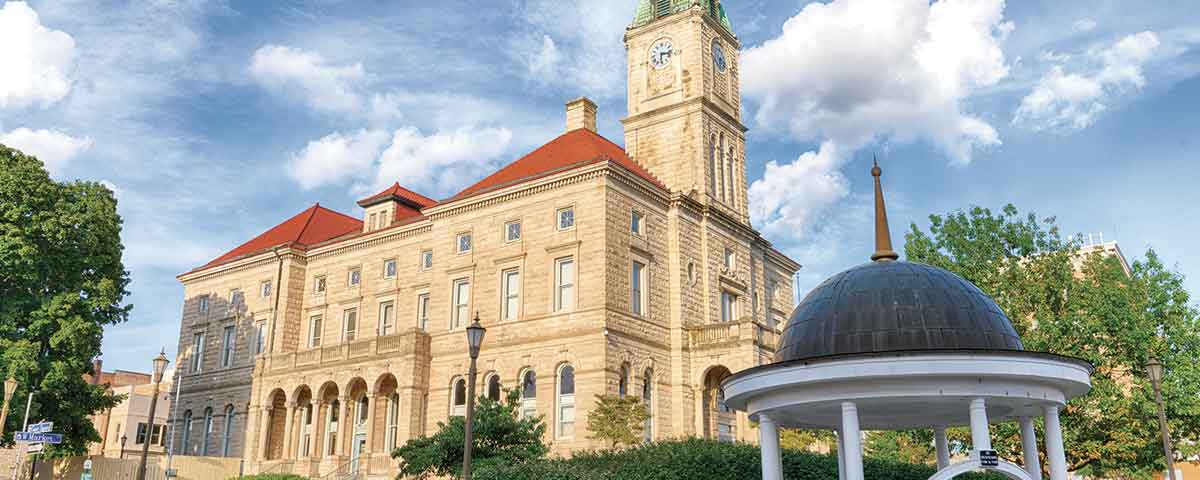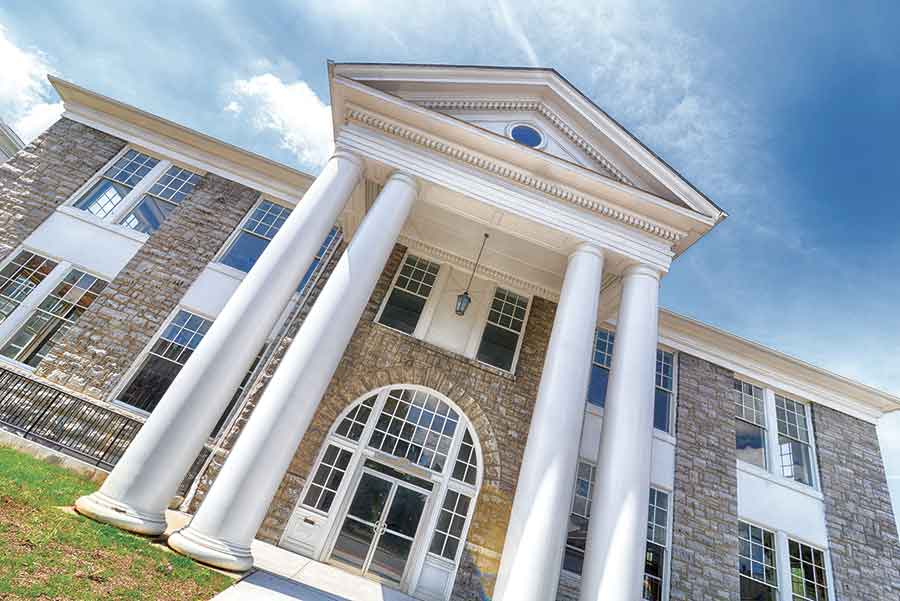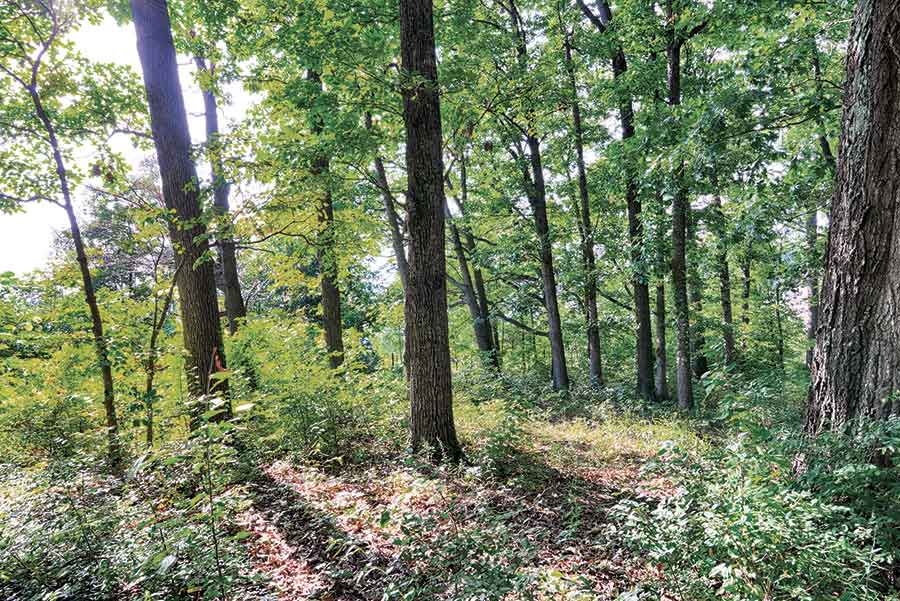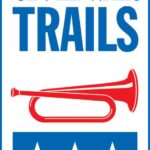 Both Union and Confederate soldiers brought suffering to this Shenandoah valley hamlet
Both Union and Confederate soldiers brought suffering to this Shenandoah valley hamlet
Trailside is produced in partnership with Civil War Trails Inc., which connects visitors to lesser-known sites and allows them to follow in the footsteps of the great campaigns. Civil War Trails has to date 1,552 sites across five states and produces more than a dozen maps. Visit civilwartrails.org and check in at your favorite sign #civilwartrails.
In the spring of 1862, Confederate Maj. Gen. Thomas J. “Stonewall” Jackson understood all too well the strategic importance of Virginia’s Shenandoah Valley. Its proximity to Washington, D.C., and its navigable transportation and supply routes made it valuable to both armies. The Valley’s fertile ground made it the most important wheat-growing region in the South and, coupled with plentiful cornfields, orchards, and herds of cattle, sheep, and hogs, earned it the nickname “The Breadbasket of the Confederacy.” Rebel troops were fed from the land for years.
“If the Valley is lost,” Jackson declared, “Virginia is lost!”
During his Valley Campaign (March 22–June 9, 1862), Jackson marched his 17,000 troops 650 miles through the Valley and pitted them against three Union armies in five battles and numerous skirmishes.
In 1863, Robert E. Lee’s troops used the Valley as an avenue to advance north during the Gettysburg Campaign. And in 1864, Union General Philip Sheridan won a series of battles in a campaign that wrested control of the Valley away from the Confederates and left stretches of the region in ruins.
Located at the crossroads of two key highways through the region, Harrisonburg was almost constantly affected by the war, housing military prisoners, wounded soldiers, and even playing host to a skirmish on June 6, 1862, that claimed the life of beloved Confederate cavalry hero Turner Ashby.
The city, today still nestled amid scenic mountain views, is recognized as the home of the acclaimed James Madison University. The 40-block district of historic downtown retains its Civil War–era charm and celebrates its connections to the war with guided tours, a Civil War Orientation Center, several area museums with displays highlighting local involvement in the war, monuments, a soldiers’ cemetery, and a half-dozen Civil War Trails signs scattered across town.
As the Rockingham County seat, Harrisonburg has always had a large number of hotels for travelers to the area. Visitors can consider themselves among famed, historic company, including Confederate spy Belle Boyd, who reportedly spent a few nights in town in early June 1863. – Melissa A. Winn
Confederate General Hospital
345 S. Main St.
Several buildings in Harrisonburg were used as temporary hospitals during the Civil War, most notably the Harrisonburg Female Academy on Main Street, now the site of a Harrisonburg municipal building. The academy building was converted to hospital use in 1861, and Harrisonburg physician Dr. W.W.S. Butler was appointed surgeon in charge. The building became an official Confederate General Hospital in October 1862. As troops retreated from Gettysburg in 1863, there were so many sick and wounded in Harrisonburg, the hospital couldn’t hold them all. “Only a little time elapsed…before the building used as a school house in days of peace was converted into a hospital, and from that time until the summer of 1865 it was never without the sick and wounded,” one local woman recorded.
Turner Ashby’s Death Site
1164 Turner Ashby Lane
General Turner Ashby was mortally wounded near this spot atop Chestnut Ridge during the Battle of Harrisonburg June 6, 1862. A monument to Ashby marks the spot. During the skirmish, Pennsylvania Bucktails under Colonel Thomas Kane were defeated by the 58th Virginia and the 1st Maryland Infantry CSA. After Ashby’s horse was shot from under him, he rose up and ordered his men to use the bayonet, yelling, “Charge, men! For God’s sake charge!” A Union bullet penetrated his side and passed through his chest. He fell dead, while his men cleared the Federals from the woodline, which is clearly visible today in the small park that remains at the site.
Hardesty-Higgins House Visitor Center
212 S. Main St.
Home to the town’s first mayor, Isaac Hardesty, this house was briefly used as headquarters for Union Maj. Gen. Nathaniel Banks as he tried to corner Stonewall Jackson in 1862. A must-see for visitors to the area, it now houses a Civil War Orientation Center that offers the stories of individuals, battles, and campaigns in the Shenandoah Valley through film and interpretation. The house also holds the Valley Turnpike Museum, which highlights the historical importance of Route 11, including during the Civil War.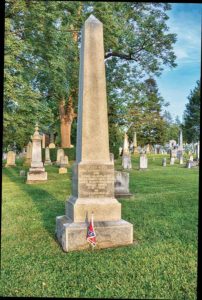
Woodbine Cemetery
212 Reservoir St.
Chartered in 1850, Woodbine Cemetery was developed as Harrisonburg’s main cemetery. The deaths of soldiers at nearby engagements and of the wounded soldiers treated at Harrisonburg’s Confederate General Hospital prompted a city merchant to donate an extra acre for a soldiers’ cemetery here. Eventually, about 250 Confederate soldiers were buried in the cemetery, including Joseph Latimer, the “Boy Major.” In 1876, the Ladies’ Memorial Association erected a 23-foot high monument “in grateful remembrance of the gallant Confederate soldiers, who lie here.”
Meigs Historic Site
End of Meigs Lane, Off VA Route 24
On October 3, 1864, on this site just past the Harrisonburg city line into neighboring Dayton, Va., Lieutenant John Rodgers Meigs was killed in a fight with Confederate scouts. Meigs was the eldest son of Montgomery Meigs, quartermaster general of the U.S. Army, and was a member of Maj. Gen. Philip Sheridan’s staff. Believing Meigs’ death was caused by bushwackers, Sheridan retaliated by ordering that buildings over a large area, including Dayton, be burned to the ground. The order was later rescinded, but not before more than 30 homes were destroyed, in what would become known as the “Burnt District.” Today, sightseers can visit a monument to John Meigs and small sitting area at the site.
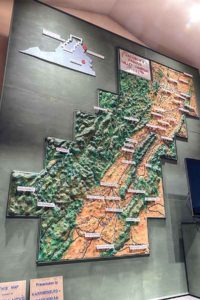
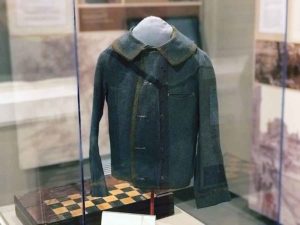
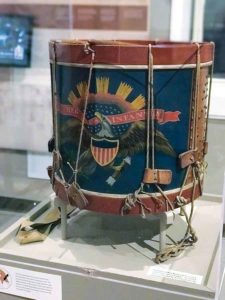
Heritage on Display
The Harrisonburg-Rockingham Historical Society is located minutes from downtown Harrisonburg in the buildings that make up The Heritage Museum, which lays claim to an impressive collection of historical displays and artifacts, including a Union Civil War drum and the 10th Virginia Infantry regimental flag. It also houses a 14-foot vertical electric map illuminating Stonewall Jackson’s 1862 Valley Campaign. The site is open Mon.–Sat. 10 a.m.–5 p.m. and seasonal Sundays 1 p.m.–5 p.m. 382 High St.
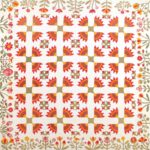
Virginia Quilt Museum
301 S. Main St.
The Virginia Quilt Museum is housed in the historic Warren-Sipe House, home of Edward T.H. Warren, a Harrisonburg attorney and descendant of Thomas Harrison, the founder of Harrisonburg. Warren commanded the 10th Virginia Infantry and fought in many of the fiercest battles of the Civil War, including the Second Battle of Manassas, Gettysburg, and the Wilderness, where he was killed. In July 1863, the Warren family cared for Confederate artillerist Joseph W. Latimer, the “Boy Major,” who was injured at Gettysburg and died here in August of gangrene. The Virginia Quilt Museum’s collection includes several Civil War–era quilts and an interpretive display relating the history of the building and its Civil War connections, as well as the war’s impact on Harrisonburg.

